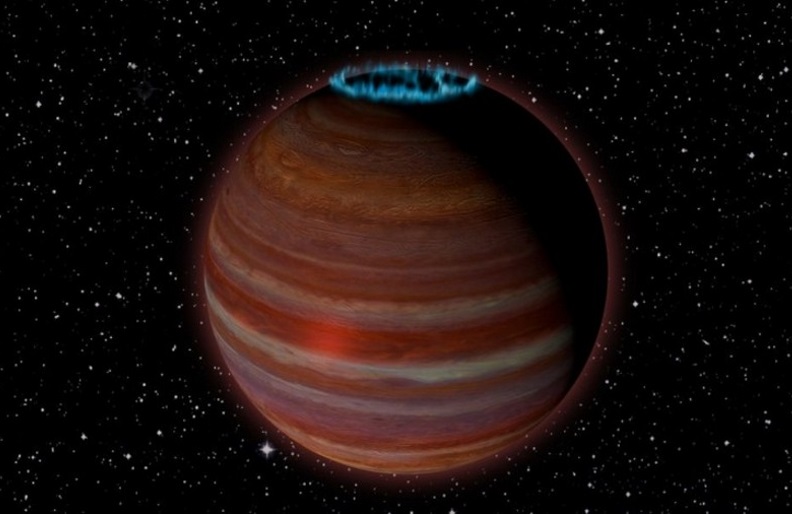There is a very strange object floating around our stellar neighbourhood and it has astronomers intrigued.
It’s very large, and has an extremely strong magnetic field, and it’s a “rogue”, not attached to any other object.
And we know this because astronomers have detected it using the Very Large Array radio telescope.
At just 20 light years from home, this marks the first planetary-mass object that has ever been detected using radio telescopy. But only just.
At 12.7 times more massive than Jupiter, it’s right on the upper limit for planets – verging into brown dwarf territory.
“This object is right at the boundary between a planet and a brown dwarf, or ‘failed star,’ and is giving us some surprises that can potentially help us understand magnetic processes on both stars and planets,” said astronomer Melodie Kao of Arizona State University.
According to a working definition laid out by the IAU Working Group on Extrasolar Planets, a brown dwarf as an object that is too small to produce hydrogen fusion, the dominant process that generates energy in stars, but is still large enough for deuterium fusion, a lower temperature process vital to newly forming stars.
They sit, therefore, between very small stars and very large planets, between around 13 and 80 times the mass of Jupiter, and are sometimes known as “failed stars”.
They were also initially thought not to give off any radio waves, but in 2001, they were discovered to be absolutely teeming with magnetic activity. Further observations revealed that brown dwarfs can generate strong auroras.
Here on Earth, auroras are generated by solar winds, which interact with charged particles in our ionosphere. These charged particles travel along the planet’s magnetic field lines to the poles, where they manifest as dancing lights in the sky, and producing strong radio emissions.
But as far as we know, brown dwarfs aren’t in the vicinity of any stellar winds, making their auroras something of a puzzle.
Those are the processes that this new object, named SIMP J01365663+0933473, might help astronomers learn more about.
Discovered among a cluster of very young stars, it’s about 200 million years old – just a wee baby.
And, although it’s 12.7 times more massive than Jupiter, it’s only a little bit bigger, with a radius 1.22 times that of our gas giant.
Compared to the Sun’s 5,500-degree-Celsius surface temperature (9,932 degrees Fahrenheit), it’s relatively cool, coming in with a surface temperature of 825 degrees Celsius (around 1517 degrees Fahrenheit).
But its magnetic field is something worth a closer look. It’s a massive 200 times the strength of Jupiter’s magnetic field.
The team believe that they have detected radio emissions from these auroras – which presents a challenge to how we understand the mechanisms for auroras in both brown dwarfs and exoplanets.
“This particular object is exciting because studying its magnetic dynamo mechanisms can give us new insights on how the same type of mechanisms can operate in extrasolar planets – planets beyond our Solar System,” Kao said.
“We think these mechanisms can work not only in brown dwarfs, but also in both gas giant and terrestrial planets.”
That’s pretty freaking cool. But the discovery could also have another exciting implication that goes way beyond understanding aurora.
“Detecting SIMP J01365663+0933473 with the VLA through its auroral radio emission,” said astronomer Gregg Hallinan of Caltech, “also means that we may have a new way of detecting exoplanets, including the elusive rogue ones not orbiting a parent star.”
The research has been published in The Astrophysical Journal.
